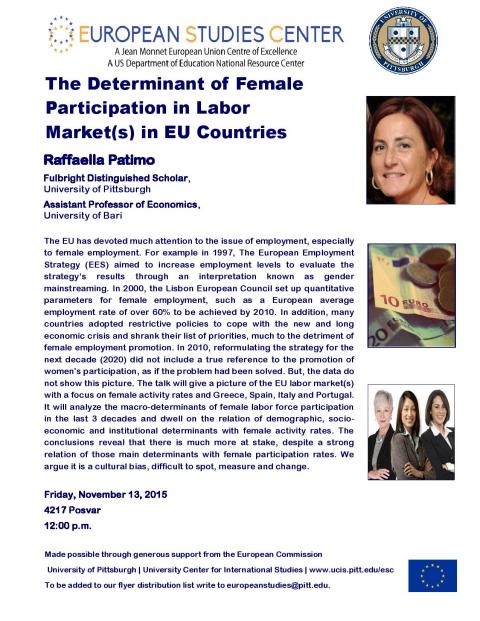
The EU has devoted much attention to the issue of employment, especially to female employment. For example in 1997, The European Employment Strategy (EES) aimed to increase employment levels to evaluate the strategy’s results through an interpretation known as gender mainstreaming. In 2000, the Lisbon European Council set up quantitative parameters for female employment, such as a European average employment rate of over 60% to be achieved by 2010. In addition, many countries adopted restrictive policies to cope with the new and long economic crisis and shrank their list of priorities, much to the detriment of female employment promotion. In 2010, reformulating the strategy for the next decade (2020) did not include a true reference to the promotion of women's participation, as if the problem had been solved. But, the data do not show this picture. The talk will give a picture of the EU labor market(s) with a focus on female activity rates and Greece, Spain, Italy and Portugal. It will analyze the macro-determinants of female labor force participation in the last 3 decades and dwell on the relation of demographic, socio-economic and institutional determinants with female activity rates. The conclusions reveal that there is much more at stake, despite a strong relation of those main determinants with female participation rates. We argue it is a cultural bias, difficult to spot, measure and change.

